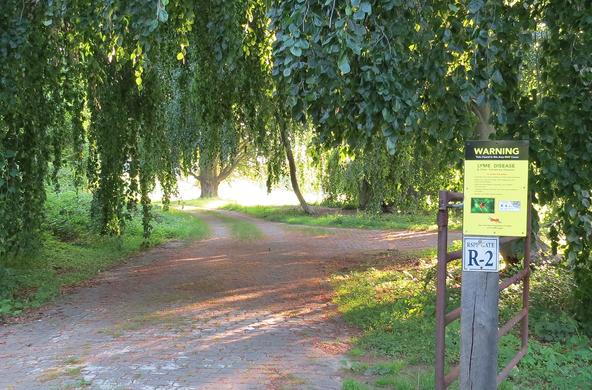A Saratoga County resident is recovering from a rare but emerging illness carried by deer ticks that transmit Lyme disease, according to a county health official.
While extremely rare, Powassan virus is deadlier than other tick-borne illnesses — killing 30 percent of those infected statewide since 2004 — and its victims are infected much more quickly.
"With Lyme disease, once you find the tick on you, you've got a day or so to remove it, before it can transmit the pathogen to you," said Richard Ostfeld, disease ecologist at the Cary Institute of Ecosystem Studies in Millbrook. "But with Powassan virus, a tick can start transmitting the virus within 15 minutes."
Unlike Lyme disease, there's no treatment for Powassan virus; doctors can address symptoms only. The virus can cause central nervous system malfunction, meningitis and encephalitis — brain swelling.
Disease experts counsel prevention as the best defense: Cover up, especially when going into wet, wooded areas. Use insect repellent. Check for ticks after being outdoors, and remove them immediately.
Only 15 cases of Powassan virus have been discovered statewide in the last nine years, said Laura D. Kramer, director of the state Health Department's Arbovirus Laboratories in Slingerlands. But that compares to less than one case a year in a previous 40-year period.
"It's a rare disease, there's no question about it," Kramer said. "But it appears to be increasing in prevalence in the ticks, and therefore poses a threat to humans."
Researchers at the Health Department and the Cary Institute found larger-than-expected numbers of ticks infected with Powassan virus in the Hudson Valley, particularly east of the Hudson River, over a five-year period ending 2012. In a study of 13,500 ticks, researchers found as many as 6 percent with the virus, depending upon county, Kramer said.
Over the same period, 14 patients statewide tested positive for deer tick virus, a variant of Powassan that causes the same symptoms. Ten of those patients were in Westchester, Putnam and Dutchess counties — consistent with the cluster of infected ticks. One patient was from Albany County, in 2004.
The Saratoga County resident who is recovering from the illness was diagnosed in May, said Karen A. Levison, the county's director of public health.
The number of other tick-borne illnesses reported to the U.S. Centers for Disease Control and Prevention is on the rise, led by Lyme disease, but also including anaplasmosis, babesiosis and ehrlichiosis. The Hudson Valley had been the national epicenter of such diseases for years. In 2011, the last year for which information is available, Rensselaer and Saratoga counties were behind only Orange County for the most reported cases of Lyme disease outside New York City. While Lyme can be treated effectively with antibiotics if caught early, some patients suffer lingering, debilitating symptoms.
The number of pathogens that ticks carry creates "a very serious problem that public health faces," Kramer said. Removing ticks from the environment would be no easy task. People can keep them off their lawns with pesticides. But while insecticides reduce the number of ticks in the yard, studies show they do not lower the residents' chances of contracting a tick-borne illness, Ostfeld said. That suggests more people are away from their property when infected.
Pesticides cannot be used in large wooded areas because they would kill other insects — honeybees, butterflies, spiders and many others.
Some natural remedies — fungi, oil of rosemary, and extract from Alaska yellow cedar trees — have been proven to reduce ticks. But more research about their effectiveness is needed before they should be used widely, Ostfeld said. And spraying large swaths of wilderness, even with natural potions, would be inefficient and costly.
"Figuring out where people get exposed is key," he said.






